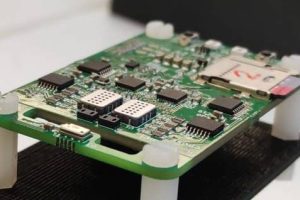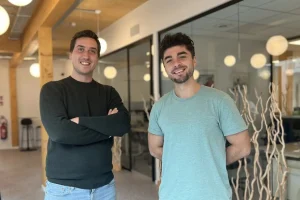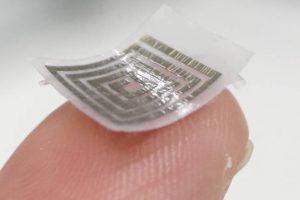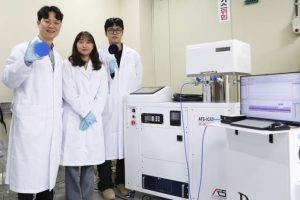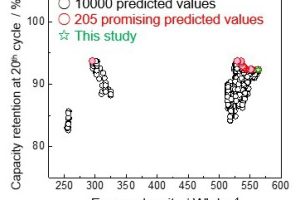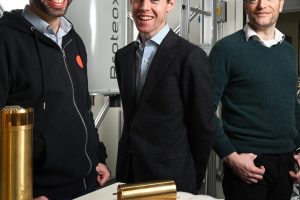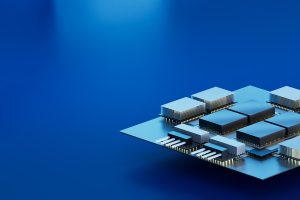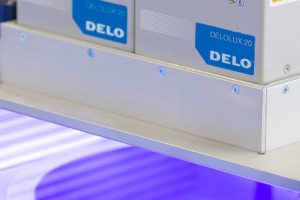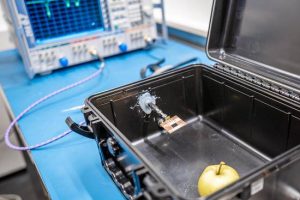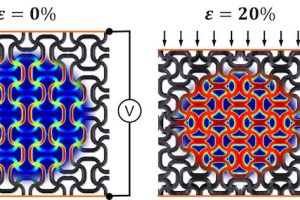University of Hertfordshire researchers have created an electronic nose that can identify smells in tens of milliseconds using standard metal oxide sensors in an novel way. The micro-machined sensors are ScioSense’s CCS801 volatile organic compound detector, and SGX Sensortech’s triple detector MiCs-6814 for carbon monoxide, nitrogen oxides and ammonia. These are duplicated for a total of eight metal oxide (‘MOX’) ...
Research
The latest electronics research news from within the industry and universities from around the world.
Imec spinoff develops sportswear to reduce injury
Skinetix, an imec/VUB spin-off, is developing sportswear with integrated sensors to record detailed movement and muscle activity to help prevent injury. By enriching the data with a personalized biomechanical model, the platform grants insights in muscle condition, movement quality and fatigue, allowing training to be adjusted according to the data. The spin-off brings together expertise in sensor technology and AI. ...
Medical sensor uses novel elastic conductive film
The University of Edinburgh has a novel flexible conductive film that it has exploited in a wireless sensor that can tell how tight a bandage is. While many elastic or stretchable conductors are based on serpentine tracks, this one is based on micro-wrinkles in the conductive film, much like the patterns on fingerprints, but far smaller – too small to ...
PECVD makes 2D heterostructures over 100mm wafer
Researchers at the Korea Institute of Machinery and Materials have developed a way to grow 2d transition metal dichalcogenides heterostructures across 100mm wafers using plasma-enhanced chemical vapour deposition (PECVD), claiming this to be a first. “Transition metal dichalcogenides [are] candidates for next-generation semiconductors, with atomic-level 2d structures offering silicon-like performance, low power operation, and fast switching speeds,” according to the ...
Machine learning predicts better electrode materials for sodium-ion batteries
Tokyo University of Science has trained AI with years of electrochemical research results to predict better electrode materials for sodium-ion battery positive electrodes. Sodium-ion batteries are seen as a lower cost alternative to lithium-ion batteries, for grid storage, for example, but the large sodium ions are difficult to store. The university is looking into a class of compounds called transition-metal ...
Quantum Motion and Goldman Sachs join for complex calculations
Quantum Motion, a UK-based quantum computing scale-up, and Goldman Sachs have come up with a paper titled “Low Depth Phase Oracle Using a Parallel Piecewise Circuit” which shows how how quantum computers can be used in financial services to perform complex calculations such as options pricing. The paper explores how intricate multi-qubit operations can be applied within pricing algorithms and ...
Imec expands auto chiplet group
Ten companies – Imec, Arm, ASE, BMW, Bosch, Siemens, SiliconAuto, Synopsys, Tenstorrent and Valeo – have now joined an Automotive Chiplet Program (ACP) to evaluate which chiplet architectures and packaging technologies are best for automotive applications. “The adoption of chiplet technology would signal a disruptive shift in central vehicle computer design, offering distinct advantages over traditional monolithic approaches. Chiplets facilitate ...
Semicon Europa: Low-warpage moulding for FOWLP wafer-level packaging
Delo is proposing low-viscosity UV-curable moulding compounds for FOWLP – fan-out wafer-level packaging. “With the use of UV-curable molding materials instead of heat curing ones, warpage and die shift can be reduced significantly,” according to the company. “Additionally, this leads to improvements in curing time and minimises energy consumption.” FOWLP is a set of wafer-level integration techniques where a wafer ...
E-nose uses a single antenna and no specific coatings
An artificial nose with only a single sensor sounds like a dream, but researchers in Norway have got a significant way there, with one that can tell six volatile organic compounds apart 96% of the time, and can tell the difference between grapes bought yesterday and grapes bought last week. The team, from the Norwegian University of Science and Technology ...
3D printed object measures its own loading through piezo-resistance
3D-printed lattice-like composites can be designed to detect their own strain, load and damage, according to the University of Glasgow. Crucially, the team has a complete theoretical model of the substances’ piezo resistivity – its resistance change as it deforms. “Imparting piezoresistive behaviour to 3D-printed cellular materials gives them the ability to monitor their own performance without any additional hardware,” ...
 Electronics Weekly
Electronics Weekly
